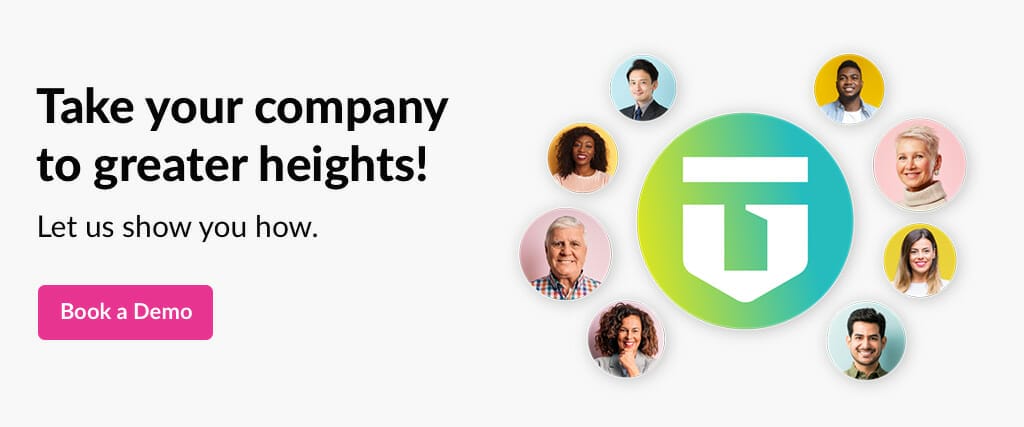Skill Assessment and Verification for Growth

Skill Assessment and Verification for Growth
Redefining skill assessment for continuous growth enhances employee development and drives organizational success. Businesses are facing a profound challenge: traditional skill assessment and verification methods are no longer sufficient in today’s dynamic workforce. This realization has led organizations to seek innovative solutions to assess, verify, and showcase skills accurately and efficiently. In this blog post, we explore the pioneering approach offered by TalentGuard, Inc., a leader in AI-driven workforce intelligence solutions. TalentGuard’s paradigm-shifting model redefines skill assessment and verification, creating a roadmap for continuous growth and transformation.
The Business Challenge
One of the critical challenges confronting businesses today is the realization that relying on spreadsheets to manage employee skills is outdated and ineffective. As organizations become more complex, and the workforce continues to evolve, traditional tools like spreadsheets lack the capability to provide real-time insights, holistic views, or predictive analytics. This limitation hampers informed decision-making, making it imperative for leaders to seek advanced, technology-driven solutions. Using spreadsheets to capture and assess skills introduces several error rates and issues, including:
Error Rates in Spreadsheets for Skill Management
- Data Entry Errors – Studies suggest that 88% of spreadsheets contain errors, with an average error rate of 1% per cell in manually entered data. Even small-scale spreadsheets can accumulate significant inaccuracies.
- Formula and Calculation Mistakes – Research has found that nearly 90% of spreadsheets with more than 150 rows contain calculation errors, often leading to incorrect skills assessment.
- Version Control Issues – A study by PwC found that version confusion leads to errors in 95% of business spreadsheets, causing misalignment between different departments or stakeholders tracking skills.
- Human Input Bias – A Harvard study estimated that 40% of spreadsheet errors stem from user judgment mistakes, which can lead to subjective or inconsistent skill ratings.
- Data Loss and Corruption – Spreadsheet crashes, accidental deletions, or improper saving methods result in data loss in approximately 30% of organizations using Excel or Google Sheets for workforce management.
Common Issues When Using Spreadsheets for Skills Capture & Assessment
- Lack of Standardization – Spreadsheets don’t enforce standardized competency frameworks, leading to inconsistent skill assessments across teams.
- Scalability Problems – As organizations grow, managing thousands of employees’ skills in a spreadsheet becomes impractical, increasing data retrieval and update times by over 50%.
- No Real-Time Collaboration & Updates – Manual spreadsheet updates mean skills data is often outdated, leading to gaps in workforce planning.
- Difficulty in Tracking Progress – Without automation, tracking skill growth, learning interventions, or certification expirations becomes cumbersome.
- Limited Analytics & Insights – Spreadsheets lack built-in AI-driven insights or real-time dashboards, making it harder to identify skill gaps or trends.
The Evolution of Skill Assessment and Verification
The evolution of skill assessment and verification marks a significant shift in how organizations gauge employee capabilities. Traditionally, employees could tag countless skills based on their experiences, offering a simplistic view of their proficiency. However, this approach lacks granularity and fails to capture nuanced skill levels.
Recognizing these limitations, businesses are transitioning to a more precise approach, assessing employees based on proficiency levels within specific skills. This shift provides a comprehensive understanding of the workforce’s capabilities, enabling tailored training programs, better talent allocation, and improved decision-making. TalentGuard plays a pivotal role in this evolution by offering a detailed perspective that bridges the gap between incremental learning and skill mastery.
TalentGuard’s model encompasses five phases of employee proficiency development:
- Assess: Establish a baseline of current skills and identify strengths and gaps.
- Verify: Confirm the accuracy and proficiency of claimed skills.
- Develop: Tailor skill development programs to enhance skills based on insights.
- Apply: Implement learning in the work environment, translating theory into action.
- Measure: Refine and optimize the process to keep up with evolving company needs.
This dynamic framework promotes excellence in personal and career development, emphasizing continuous improvement over memorization.
Real-time Verification: Empowering Skills Assessment for Continuous Growth
The traditional model of end-of-program skill verification falls short in assessing real-world applicability and adaptability. TalentGuard introduces real-time verification, allowing learners to validate their skills as they acquire them. This paradigm shift empowers individuals to showcase their abilities in real-time, ensuring their skills remain current and relevant. This approach to skills alignment motivates employees to continuously update their talent profile.
Real-time skill verification offers benefits not only to individuals but also to organizations. It provides real-time insights into workforce proficiency, enhancing transparency, trust, and organizational success. TalentGuard is even exploring automated verification methods with the use of WorkforceGPT, showing promising results in making this process more efficient.
Benchmarking Skills Dynamically: Unveiling Growth Trajectories
Benchmarking skills essential for specific roles or industries involves comparing the skills possessed by individuals or teams within an organization to those in the broader market. Traditional static benchmarks struggle to adapt to the dynamic nature of skill growth, hindering personalized learning journeys.
TalentGuard, however, embraces dynamic skill benchmarking, allowing learners to assess themselves against market benchmarks that align with their growth paths. This approach accommodates different learning paces and provides a real-time representation of progress. It also enables the tracking and visualization of growth trajectories, motivating learners and guiding data-driven decisions for organizations.
Creating a Holistic Skill Development Ecosystem
TalentGuard’s visionary approach integrates three crucial components: granular progress tracking, real-time verification, and dynamic benchmarking. This holistic ecosystem transforms skill development into an ongoing process of growth and mastery.
- Granular progress tracking empowers organizations to closely monitor employee proficiency, fostering a culture of continuous learning and improvement.
- Real-time verification ensures skills remain relevant and adaptable, preparing learners for dynamic industry demands.
- Dynamic benchmarking enables learners to set personalized goals and visualize progress, motivating continued development.
- Together, these components redefine skill development as an ongoing journey rather than a one-time achievement.
TalentGuard’s AI-Powered Skills Management see many benefits:
Organizations that switch to AI-driven skills platforms, such as TalentGuard, experience:
- 50% faster skill assessments with automation.
- 30% fewer reporting errors by eliminating manual entry mistakes.
- Real-time skills visibility across departments with centralized, always-updated data.
Future Perspectives and Industry Impact
The reimagining of skill assessment and validation through TalentGuard’s solutions extends far beyond individual organizations. This visionary shift has the potential to redefine entire industries, fostering adept and adaptable workforces capable of responding to changes swiftly and empowering innovation.
As TalentGuard’s approach gains traction, it serves as a catalyst for reshaping how skills are developed, validated, and utilized on a broader scale. Ultimately, this contributes to the cultivation of more resilient and agile industries.
Conclusion
In conclusion, the paradigm shift toward continuous growth in skill development is both timely and transformative. TalentGuard’s innovative solutions empower organizations to cultivate skills that are continuously validated and showcased, driving growth and transformation. This approach goes beyond individual benefits, impacting industries at large, fostering adept and adaptable workforces ready to excel in today’s ever-evolving landscape. As organizations embrace this paradigm shift, TalentGuard remains at the forefront, redefining the future of skill assessment and validation. To learn more about this topic, please read our white paper.
Ready to support the journey of employee skills growth? Request a demo to learn more.
Other Resources:
What is Workforce Intelligence?
What is Workforce Intelligence and why does it matter? Workforce intelligence refers to the process of gathering, analyzing, and interpreting data related to an organization’s workforce to gain insights that can inform decision-making and optimize workforce management strategies. It involves the use of data analytics, technology, and tools to understand various aspects of the workforce, […]
Evolving Your Career Architecture For Career Development
Evolving Your Career Architecture For Career Development In today’s ever-evolving work environment, traditional approaches to career development are no longer enough. With the emergence of new technologies, changing demographics, and increased competition, a more dynamic approach to career development is needed, starting with your career architecture. New approaches that can evolve your career architecture, introduce […]
Modern Job Descriptions Best Practices in 2025
New skills are required, new roles are introduced, and modern job descriptions are often lagging behind. While demands for new hires continue to be aggressive, finding the right people with the right capabilities can start with really understanding what you are looking for and elaborating those requirements effectively. This is the function of a job […]



